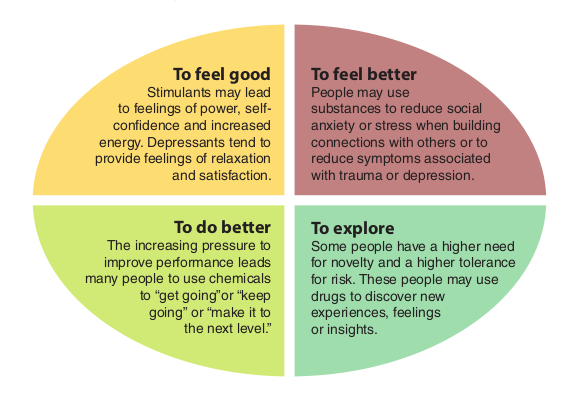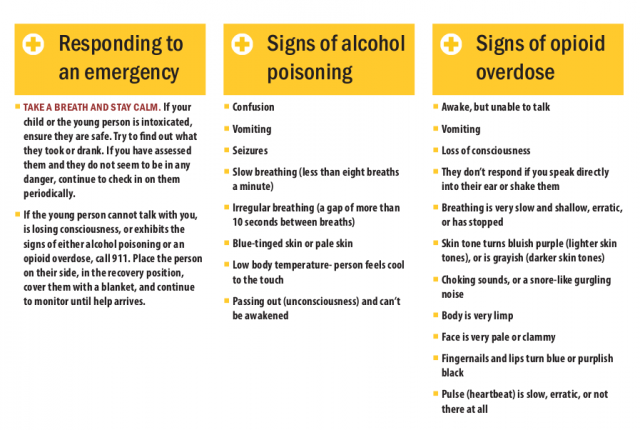Describe Three Key Factors Associated With Teenage Drug Use
161 of teenagers aged 12- to 17-years-old met the criteria for AUD in the last year. Early aggressive behavior lack of parental supervision academic problems undiagnosed mental health problems peer substance use drug availability poverty peer rejection and child abuse or neglect are risk factors associated with increased likelihood of youth substance use and abuse.

Drug Alcohol Addiction What Are The Factors That Play A Role
Those teenagers who do well in school and have bonded with teachers coaches or other adults outside of the family unit are.

. Early first use of drugs. Just as some protective factors such as a strong parent-child bond can have a greater impact on reducing risks during the early years. Attending a school without strict rules for tobacco alcohol or drugs and inconsistent.
Involvement with drugs alcohol or tobacco. The decision to use and continue to use a tobacco product depends on many factors from personal ones such as self-image to societal ones such as easy access to cigarettes. Some risk factors may be more powerful than others at certain stages in development such as peer pressure during the teenage years.
Drug availability in the community. History of early aggressive behavior. If someone is friends with those who encourage and use drugs themselves it may be difficult to abstain from drug use and be the only one not using.
Contribute to the development of adult health problems such as heart disease high blood. They remain caught in the trap of teen drug use and abuse. As noted in numerous research studies abuse is a major risk factor in the development of substance use and addictionAbuse can take different forms and while many adolescents experience it only some abuse survivors go on to develop an addiction.
Protective factors are opposite of risk factors. In this chapter the committee uses a socioecologic framework Figure 3-1 to examine the factors that encourage and sustain tobacco use in military and veteran populations. However repeated drug use can change the brain driving a person to seek out and use drugs over and over despite negative effects such as stealing losing friends family problems or other physical or mental problems brought on by drug use.
Substance use can do the following. Major Risk Factors for Adolescent. While some studies correlate the fact that persons who are more likely to use drugs are more likely to choose drug users as friends others show that the simple desire to keep up appearances with friends does contribute to starting drug use as well as to preventing users from quitting.
Victim of bullying or cyberbullying. Low grades or failure in school. There are many different factors that contribute to substance abuse.
Risk factors for drug use include. Understanding the key risk factors for drug abuse can help parents and educators identify young people who may need extra concern or care. Once initial risk factors open the door the biological dangers of drug use on the growing adolescent brain keeps many teens in the danger zone.
Misperception of peer norms. The National Institute on Drug Abuse reports that peers have a large influence on drug-abusing behavior 1. On the basis of a.
How one relates to and interacts with others can influence their risk of experimenting with drugs. Abusive and neglectful parents. 242 of teenagers aged 12- to 17-years-old met the criteria for IDUD in the last year.
Peer norms favoring drug use. 23 For those who do it is possible they turn to drugs and alcohol to cope with the trauma depression. Alienation from peers or family.
Deficits in social cognitive or information-processing abilities. Parent or older sibling drugalcohol use. The more risks a child is exposed to the more likely the child will abuse drugs.
Alcohol and other drug use changes the way you behave feel and make decisions. According to the National Institute on Drug Abuse scientists recognize that genetic predispositions to drug. These are some of the most common factors that contribute to addiction.
History of violent victimization. Personality traits attitudes and beliefs genetics peers community parents marketing portrayal in. Some of the factors impacting substance use and abuse are.
Physical or sexual abuse. 5 factors that contribute to substance abuse include genetics environment family history occupation and social factors. Affect the growth and development of teens especially brain development.
People may use alcohol and other drugs as a coping mechanism for their mental health issues. Failure in School A sign that a teenager may be using drugs is poor academic performance. Anti-social behavior including early aggressive behavior.
Alcohol and other drug use can also cause anxiety depression paranoia and psychosis in those people who have a vulnerability to mental health issues. These patterns of drug use among adolescents are associated with ramifications such as the spread of HIVAIDS increased risk for vehicular fatalities and behaviors leading to juvenile delinquency. Availability of drugs.
The risk factors are increased when you consider how drug abuse affects the teenage brain. History of treatment for emotional problems. The first time a person uses drugs its usually a free choice.
Researchers have found that youth who rapidly increase their substance abuse have high levels of risk factors with low levels of protective factors. Another explanation is that abusing drugs can lead to affiliation with drug-abusing peers which in turn exposes the individual to other drugs. Academic failure or lack of academic motivation.
Loneliness low self-esteem depression anxiety disorder and other mental health issues are commonly associated with teen substance use. Factors That Influence Teenagers to Substance Abuse Peer Pressure. Factors that Lower the Risk of Substance Abuse.
Substance use increases the risk of contracting HIV due to the potential for sharing needles and participating in risky behaviors 8. Furthermore many of these issues occur in combination with one another each compounding the intensity of the others. Drugs used in order to reduce stress and anxiety.
These are factors that may be associated with a lower likelihood of future substance abuse issues or that may reduce the impact of those risk factors just outlined. 18- to 25-year-olds are 1450 less likely to use drugs than the average American in the same age group. Occur more frequently with other risky behaviors such as unprotected sex and dangerous driving.
Risk Factors for Drug Abuse. Peer pressure is a significant factor in beginning drug use among teens and adults. 32 Gender race and geographic location can also play a role in how and when children.
Some common protective factors include. Living in a community with a high tolerance for smoking drinking or drug use among youth. Attention deficits hyperactivity or learning disorders.

Youth And The Developing Brain Pact Coalition


No comments for "Describe Three Key Factors Associated With Teenage Drug Use"
Post a Comment